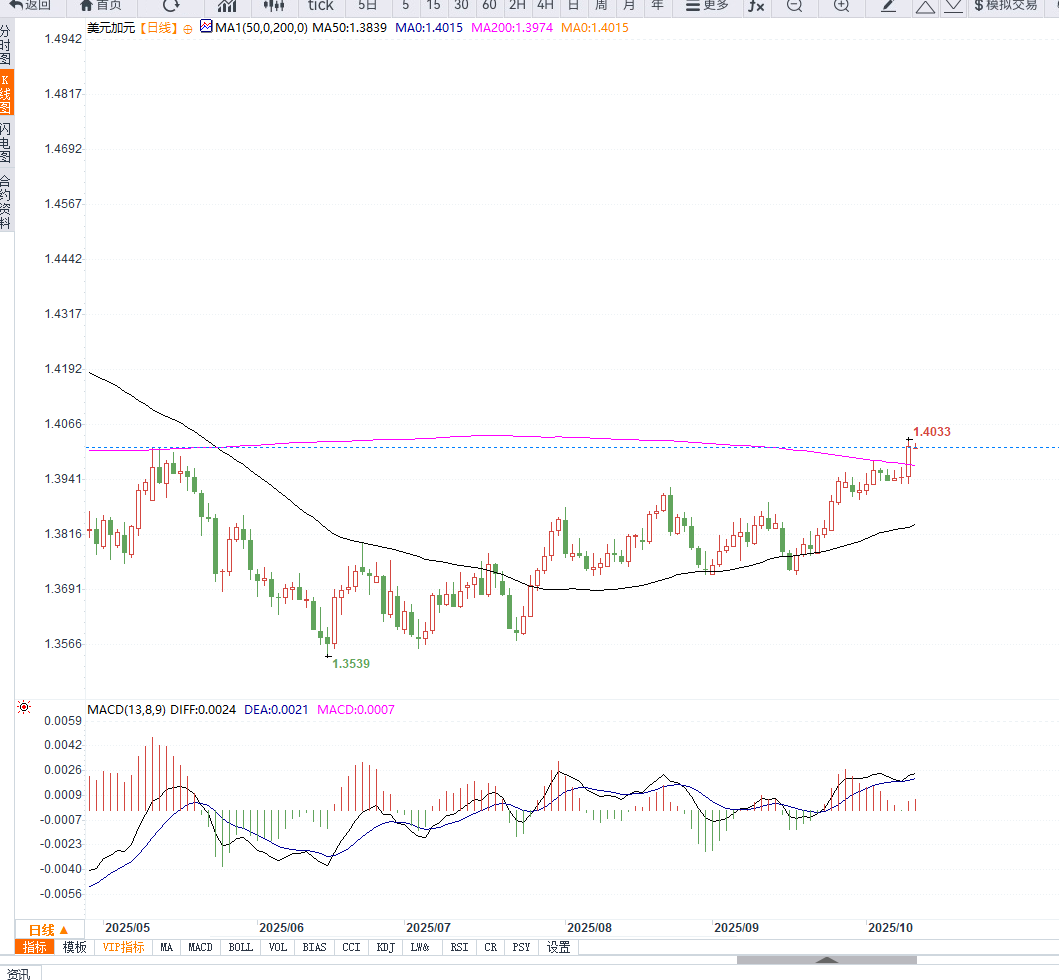The decline in oil prices resonated with the Fed's easing expectations, and the USD/CAD exchange rate held steady at 1.40, hitting a six-month high.
2025-10-10 13:11:26
As Canada is the largest supplier of crude oil to the United States, fluctuations in crude oil prices have a significant impact on the Canadian dollar. Currently, West Texas Intermediate (WTI) crude oil is trading at around $61.20 per barrel.

The recent preliminary ceasefire agreement between Israel and Hamas has led to a decline in geopolitical risk premiums, dragging down oil prices. This change has weakened the support for the Canadian dollar, keeping the USD/CAD exchange rate high.
"With tensions in the Middle East easing and oil prices retreating, the Canadian dollar lost short-term support, while the US dollar regained its advantage driven by safe-haven demand," said market analyst Akhtar Faruqui.
While the dollar has firmed amid the government shutdown and risk aversion, dovish comments from Federal Reserve officials have limited further gains.
San Francisco Fed President Mary Daly stated that U.S. inflation has fallen more than expected, and the Fed expects to continue implementing "risk-management rate cuts" in the future. Meanwhile, Fed Vice Chairman Michael Barr also noted that the current policy stance remains restrictive, and the future path will depend on economic data performance and the duration of the fiscal deadlock.
Looking at the daily chart, USD/CAD has formed a new upward channel after breaking through the 1.4000 mark. The RSI indicator is slightly overbought, but the moving average system is still bullish, indicating that the upward trend is intact.
If the exchange rate holds support at 1.3980, it could continue its upward trend towards the 1.4050-1.4100 range in the short term. In the event of a pullback, 1.3950 will be a key defensive level. Overall, the USD/CAD pair remains in a bullish trend.
 Editor's opinion:
Editor's opinion:The current strength of the USD/CAD pair reflects more a passive weakening of the Canadian dollar than an active rally of the US dollar. The combination of expectations of easing by the Federal Reserve and falling oil prices has left the exchange rate with little momentum for a significant correction in the short term.
However, if subsequent US consumer data weakens or the Federal Reserve accelerates its rate cuts, the dollar's upward momentum may be limited. In the medium term, the 1.4000 mark remains a key support area, and we should be wary of the potential boost to the Canadian dollar from a rebound in oil prices.
- Risk Warning and Disclaimer
- The market involves risk, and trading may not be suitable for all investors. This article is for reference only and does not constitute personal investment advice, nor does it take into account certain users’ specific investment objectives, financial situation, or other needs. Any investment decisions made based on this information are at your own risk.





















